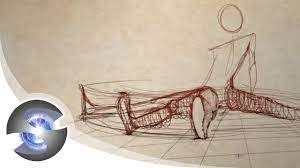
The Art of Technique: Mastering Skills for Success
Technique is the cornerstone of excellence in any field. Whether it’s playing a musical instrument, performing a complex surgical procedure, or executing a flawless dance routine, mastering technique is essential for achieving success.
At its core, technique refers to the specific methods and approaches used to accomplish a task or achieve a desired outcome. It involves precision, practice, and attention to detail. Without proper technique, even the most talented individuals may struggle to reach their full potential.
One key aspect of developing strong technique is repetition. Practice makes perfect, as the saying goes. By repeatedly performing a task or skill, individuals can refine their movements, improve their timing, and enhance their overall performance.
Another crucial element of technique is feedback. Receiving constructive criticism from mentors, coaches, or peers can help individuals identify areas for improvement and make necessary adjustments to enhance their skills.
Furthermore, understanding the underlying principles behind a technique is vital for mastery. By comprehending the mechanics and rationale behind a particular method, individuals can adapt and innovate to suit different situations and challenges.
In today’s fast-paced world, where competition is fierce and expectations are high, honing one’s technique is more important than ever. Whether in sports, arts, business, or any other domain, those who prioritize skill development and embrace continuous learning are more likely to excel.
In conclusion, mastering technique is an ongoing journey that requires dedication, discipline, and a willingness to push beyond one’s comfort zone. By investing time and effort into refining skills and perfecting methods, individuals can unlock their full potential and achieve greatness in their chosen pursuits.
Understanding Techniques: Definitions, Examples, and Synonyms
- What is the difference between technic and technique?
- What is an example of a technique?
- What is another word for technique?
- What are the three 3 techniques of definitions?
- What does it mean to have technique?
What is the difference between technic and technique?
The distinction between “technic” and “technique” lies in their usage and context within various disciplines. “Technic” typically refers to a specific method or skill used in the execution of a task, often associated with hands-on practices or craftsmanship. On the other hand, “technique” encompasses a broader concept of the methods, approaches, and principles employed to achieve a desired outcome across different fields, such as arts, sports, or technology. While “technic” may focus on the practical aspects of performing a task, “technique” emphasizes the systematic application of skills and knowledge to master a particular craft or discipline. Understanding this nuanced difference can help individuals refine their abilities and excel in their chosen pursuits.
What is an example of a technique?
An example of a technique is the “Pomodoro Technique,” a time management method developed by Francesco Cirillo in the late 1980s. This technique involves breaking work into intervals, typically 25 minutes in length, separated by short breaks. By focusing on a single task during each interval and taking regular breaks to rest and recharge, individuals can improve their productivity and concentration. The Pomodoro Technique is widely used by professionals and students to enhance efficiency and workflow organization in various settings.
What is another word for technique?
When seeking an alternative term for “technique,” one may consider using the word “method” as a synonymous option. Both “technique” and “method” convey the idea of a systematic approach or procedure used to accomplish a specific task or achieve a desired outcome. By exploring different synonyms, individuals can enhance their vocabulary and effectively communicate their ideas with precision and clarity.
What are the three 3 techniques of definitions?
When exploring the concept of definitions, it is essential to understand the three key techniques commonly used to define terms or concepts. The first technique is the stipulative definition, where a new or specific meaning is assigned to a term for a particular context or discussion. The second technique is the precising definition, which aims to clarify and refine the meaning of a term by reducing ambiguity and vagueness. Lastly, the theoretical definition provides a comprehensive explanation of a term based on underlying principles or theoretical frameworks. By employing these three techniques of definitions, individuals can effectively communicate ideas, foster clarity in discussions, and enhance understanding within various fields of study.
What does it mean to have technique?
Understanding what it means to have technique is fundamental to excelling in any endeavor. Having technique entails possessing the specific skills, methods, and precision required to perform a task effectively and efficiently. It involves mastering the mechanics, nuances, and intricacies of a particular skill or discipline through practice, repetition, and continuous learning. Technique goes beyond mere talent or natural ability; it encompasses the deliberate effort and attention to detail needed to achieve consistent, high-quality results. Ultimately, having technique means having the knowledge and expertise to execute tasks with finesse, proficiency, and mastery.
